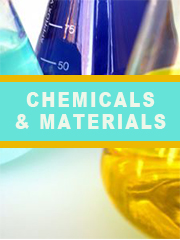TOP CATEGORY: Chemicals & Materials | Life Sciences | Banking & Finance | ICT Media

Download Report PDF Instantly
Report overview
Gold chloride is a chemical compound consisting of gold and chlorine, commonly used in various industrial and pharmaceutical applications. This compound is widely recognized for its utility in medical products, decorative applications, alkaloid reagent processes, and electronic materials manufacturing. Gold chloride exists in multiple forms, including industrial-grade and pharmaceutical-grade variants, each catering to specific end-user industries.
The Gold Chloride Market was valued at USD 95.48 million in 2024 and is projected to reach USD 123.13 million by 2032, growing at a Compound Annual Growth Rate (CAGR) of 3.2% during the forecast period (2025-2032).
The market expansion is driven by increasing demand across multiple sectors, including healthcare, electronics, and decorative industries.
Key Statistics:
Drivers:
Growing Demand in Medical Applications - Gold chloride is used in pharmaceuticals for diagnostic and treatment purposes, including cancer research and regenerative medicine.
Increasing Use in Electronics - The compound is essential in electronic component manufacturing, particularly in semiconductor and circuit board production.
Rise in Decorative Applications - The use of gold chloride in high-end decorative coatings and jewelry applications is contributing to market expansion.
Restraints:
High Cost of Raw Materials - Gold chloride production depends on gold, making it susceptible to fluctuations in gold prices.
Strict Environmental Regulations - Regulations on the use of gold chloride in various industries may slow down market growth.
Opportunities:
Advancements in Nanotechnology - Gold chloride is finding new applications in nanomedicine and advanced materials research.
Emerging Markets Growth - Developing economies present lucrative opportunities for market expansion.
Challenges:
Technical Bottlenecks in Production - Refinement and synthesis of gold chloride require advanced technology, which poses challenges for new market entrants.
Competitive Pricing Pressures - Market players must balance cost and quality to maintain profitability in the competitive landscape.
North America
Strong demand from pharmaceutical and electronic sectors.
Presence of major market players.
High investment in R&D and technological advancements.
Europe
Growing adoption in medical and decorative applications.
Stringent environmental and safety regulations impacting market operations.
Asia-Pacific
Emerging markets such as China, Japan, and India leading growth.
Expanding electronics manufacturing industry.
Increased investments in healthcare and medical research.
South America
Developing industrial applications of gold chloride.
Steady increase in demand from the mining and chemical industries.
Middle East & Africa
Expansion of chemical and material processing industries.
Infrastructure developments driving demand.
Major Players:
These companies focus on market expansion through partnerships, R&D, and strategic acquisitions.
This report provides a deep insight into the global gold chloride market, covering all its essential aspects. This ranges from a macro overview of the market to micro details of the market size, competitive landscape, development trends, niche market, key market drivers, and challenges. The analysis helps the reader understand the competition within the industry and develop strategies to enhance potential profit.
The competitive landscape of the global gold chloride market introduces in detail the market share, performance, product situation, and operational strategies of major players, helping readers understand market competition patterns.
What is the current market size of the Gold Chloride market?
The global gold chloride market was valued at US$ million in 2023 and is projected to grow significantly by 2030.
Which are the key companies operating in the Gold Chloride market?
Major players include Stanford Advanced Materials, Santa Cruz Biotechnology, Inc., KANTO CHEMICAL CO.,INC., Junsei Chemical Co.,Ltd., and others.
What are the key growth drivers in the Gold Chloride market?
Key drivers include increasing applications in pharmaceuticals, electronic materials, and decorative industries.
Which regions dominate the Gold Chloride market?
North America, Europe, and Asia-Pacific are the leading regions in the gold chloride market.
What are the emerging trends in the Gold Chloride market?
Technological advancements in nanomedicine and increased applications in industrial processes are some of the emerging trends in the market.
Outline of Major Chapters:
Chapter 1: Introduces the definition of Gold Chloride, market overview.
Chapter 2: Global Gold Chloride market size in revenue and volume.
Chapter 3: Detailed analysis of Gold Chloride manufacturers competitive landscape, price, sales and revenue market share, latest development plan, merger, and acquisition information, etc.
Chapter 4: Provides the analysis of various market segments by type, covering the market size and development potential of each market segment, to help readers find the blue ocean market in different market segments.
Chapter 5: Provides the analysis of various market segments by application, covering the market size and development potential of each market segment, to help readers find the blue ocean market in different downstream markets.
Chapter 6: Sales of Gold Chloride in regional level and country level. It provides a quantitative analysis of the market size and development potential of each region and its main countries and introduces the market development, future development prospects, market space of each country in the world.
Chapter 7: Provides profiles of key players, introducing the basic situation of the main companies in the market in detail, including product sales, revenue, price, gross margin, product introduction, recent development, etc.
Chapter 8: Global Gold Chloride capacity by region & country.
Chapter 9: Introduces the market dynamics, latest developments of the market, the driving factors and restrictive factors of the market, the challenges and risks faced by manufacturers in the industry, and the analysis of relevant policies in the industry.
Chapter 10: Analysis of industrial chain, including the upstream and downstream of the industry.
Chapter 11: The main points and conclusions of the report.